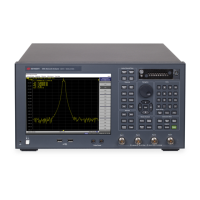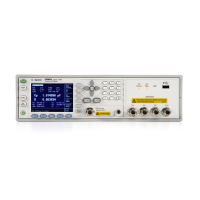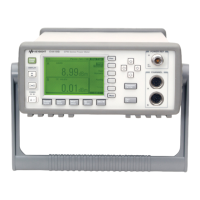E5071C
328
3. Follow the steps below to apply the defined equation. When a valid
equation is entered, the Equation Enabled check box becomes
available for checking.
1. Check Equation Enabled check box (2a in the figure above).
2. Click Apply. The equation becomes visible and annotation of
[Equ] (2b in the figure above) is displayed in the trace title
area.
3. Click Close to hide the dialog box.
4. The equation can also be applied by selecting Display > Equation
ON.
5. If error correction is not turned on, then the raw, uncorrected
data is used in the equation trace.
6. If an equation is NOT valid (i.e. referring to a trace that is not
measured in the measured channel), annotation of [Equ!] is
displayed in the trace title area instead.
Equation Editor Examples
The following examples may help you in getting started with Equation
Editor:
Offset each data point in trace 2 from trace 1 by XdB
The equation is entered into trace 2 as "Offset=
data(1)*pow(10,X/20)" (4 in the figure e5071c282).
To multiply a trace by X-times in log format
The equation is entered as "Example_Trace= pow(data,X)" (4 in the
figure e5071c282).
Differential Return Loss using a 2-port ENA
The equation is entered as "Sdd11= (S11-S21-S12+S22)/2)" (4 in the
figure e5071c282).
• For detailed on mixed-mode S-parameters on the 2-port ENA,
refer to the related FAQ on the Agilent website.
CMRR of a Balanced Component
The equation is entered as "CMRR = data(2) / data (1)" (4 in the figure
e5071c282)

